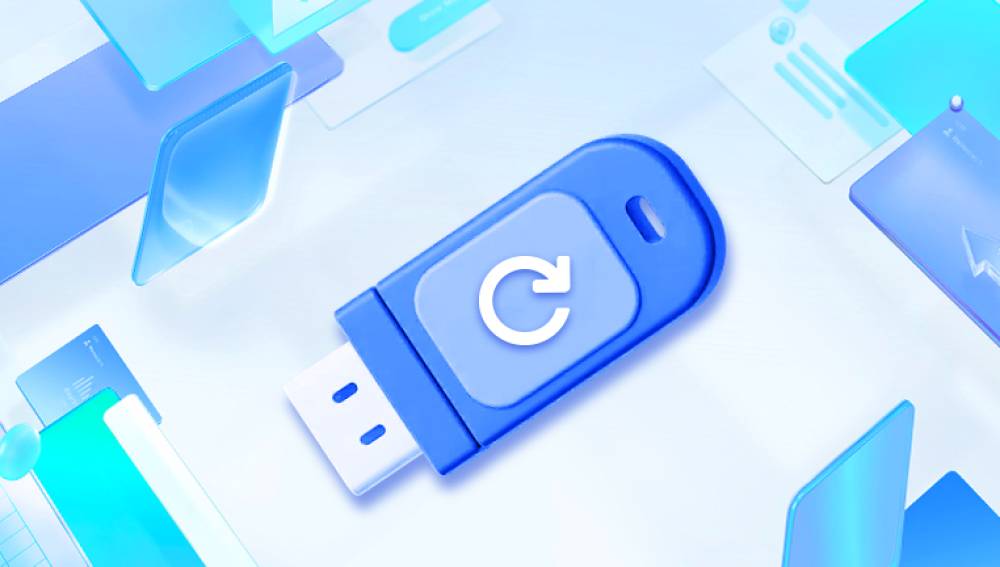These tiny, portable storage devices are widely used due to their convenience and compatibility. But despite their usefulness, flash drives are far from invincible. Accidental deletions, formatting errors, corruption, malware, and even physical damage can lead to the unexpected loss of important files. This is where a flash drive recovery program becomes essential.
A flash drive recovery program is software specifically designed to recover deleted, lost, or inaccessible data from USB flash drives. These programs scan the drive’s memory and locate data that has been deleted, formatted, or hidden due to file system issues. Recovery software works by identifying file headers and structures that remain on the drive, even if the operating system no longer recognizes them.
Most recovery programs can retrieve a wide variety of file types, including documents, images, videos, audio files, emails, and even compressed or system files. Whether the data loss was caused by human error or a technical glitch, a reliable recovery tool can often restore your lost files with surprising effectiveness.

Common Causes of Flash Drive Data Loss
Before exploring how recovery programs work, it's helpful to understand the common scenarios that lead to data loss on flash drives:
Accidental deletion: Files can be deleted with a single misclick, especially when cleaning up or organizing folders.
Formatting errors: Users may format a flash drive by mistake, or be forced to format when the drive becomes unreadable.
Corruption: Improper ejection, power outages, or malware infections can corrupt the file system and render the drive unusable.
RAW file system: Sometimes a drive may appear as RAW and prompt formatting, indicating file system damage.
Hardware failure: Though flash drives are solid-state devices, they can still suffer from physical damage, including broken connectors and failed memory chips.
Partition loss: Flash drive partitions may become corrupted or deleted, hiding the data stored on them.
In most of these situations, the actual files aren’t immediately destroyed—they’re just marked as deleted or inaccessible. Recovery programs are capable of locating and rebuilding them, as long as the data hasn’t been overwritten.
How Flash Drive Recovery Programs Work
When a file is deleted from a flash drive, the operating system typically removes its reference in the file allocation table, but the actual data remains on the drive until new data overwrites it. Recovery software is built to scan the physical sectors of the flash drive, looking for recognizable file signatures. Once found, the software reconstructs these files and gives you the option to save them elsewhere.
Here’s a simplified breakdown of how the recovery process works:
Drive Detection: The program detects all connected drives and identifies the flash drive you want to scan.
Scanning: A quick scan checks for recently deleted files, while a deep scan analyzes every sector of the drive for older or hidden data.
File Identification: The software sorts and classifies the recoverable data by file type, size, or last modified date.
Preview and Recovery: Many programs allow you to preview files—such as photos or documents—before recovering them. You then choose where to save the recovered files, ideally to a separate drive to prevent overwriting.
Recovery effectiveness depends on how recently the data was deleted and whether the flash drive has been used since the loss occurred.
Key Features to Look For in a Recovery Program
Choosing the right recovery program can greatly impact your chances of success. Here are the essential features to consider:
Ease of Use: Look for an intuitive interface that simplifies the recovery process, especially if you're not tech-savvy.
File Type Support: A good program should support a wide range of file types—documents, media, emails, archives, and more.
Quick and Deep Scan Modes: Quick scans are faster but less thorough. Deep scans take longer but uncover more data.
File Preview: Allows you to preview recoverable files before restoring them, saving time and space.
Read-Only Mode: Ensures the software doesn’t write to the flash drive during scanning or recovery, preserving data integrity.
File Filtering: Enables you to sort and search recovered data based on file name, size, or modification date.
OS and File System Compatibility: Make sure the software works with your operating system and file systems like FAT32. exFAT, and NTFS.
Top Flash Drive Recovery Programs
Drecov Data Recovery
Drecov Data Recovery is a robust and easy-to-use flash drive recovery program designed to help users restore lost, deleted, or inaccessible data from USB flash drives. Whether files were accidentally deleted, a drive was formatted, or corruption occurred due to a virus or improper ejection, Panda offers a practical and efficient solution to retrieve your important data.
What sets Drecov Data Recovery apart is its intuitive interface and powerful scanning engine. It supports both quick scans for recent deletions and deep scans for complex data loss scenarios such as formatted drives or RAW file systems. The software can recover a wide variety of file types, including photos, documents, videos, audio files, and compressed folders making it suitable for both personal and professional use.
The program operates in read-only mode, ensuring that your original flash drive remains untouched during the scanning and recovery process. This significantly reduces the risk of overwriting or further damaging existing data. With advanced file filtering and preview features, users can easily identify and recover exactly what they need.
Step-by-Step Guide: How to Recover Files from a Flash Drive
Stop Using the Drive: Immediately stop using the flash drive to avoid overwriting lost data.
Install Recovery Software: Choose a reputable recovery program and install it on your computer—not the flash drive.
Insert Flash Drive: Connect the drive to your computer and ensure it’s recognized.
Launch the Software: Open the program and select your flash drive from the list of devices.
Scan the Drive: Choose between a quick or deep scan. Let the software analyze the drive.
Review Results: Browse through the list of recoverable files. Use filters or search to find specific files.
Preview Files: If available, preview the files to confirm they’re intact.
Select and Recover: Choose the files you want to restore and save them to a different storage device or folder.
Check File Integrity: Open a few recovered files to ensure successful recovery.
Common Recovery Issues and Solutions
Problem: Flash drive isn’t recognized by the software
Solution: Try different USB ports or computers. If still unrecognized, the drive may be physically damaged.
Problem: Recovered files are corrupted
Solution: This can happen if the files were partially overwritten. Try using file repair tools included with some recovery programs.
Problem: The program freezes or crashes
Solution: Close other applications, ensure system compatibility, and reinstall the software if needed.
Problem: No files found after scan
Solution: Perform a deep scan or try alternative recovery software that supports more file types or file systems.
When to Use Professional Data Recovery Services
If recovery software fails to detect or restore your files, the issue may be physical. Signs that your flash drive may require professional help include:
The drive is not detected at all
The drive makes unusual noises
There are visible signs of physical damage
The system prompts you to format the drive every time
Recovery tools show no recoverable data
Professional data recovery labs can recover files from severely damaged flash drives using advanced techniques in cleanroom environments. While more expensive, they offer the best chance at salvaging irreplaceable data in extreme situations.
Tips to Prevent Flash Drive Data Loss
While recovery programs are powerful, prevention is always better. Follow these tips to protect your USB data:
Eject Properly: Always use the "Safely Remove Hardware" option before unplugging your drive.
Backup Regularly: Keep copies of important data on your computer, external hard drive, or cloud storage.
Avoid Exposure to Heat and Moisture: Store your flash drive in a cool, dry place.
Use Antivirus Software: Protect your system and drive from malware.
Avoid Rewriting Frequently: Flash memory has a limited number of write cycles.
Label Important Files: Organize and label files to reduce the risk of accidental deletion.
Flash drive recovery programs are invaluable tools for anyone facing unexpected data loss. Whether you’ve deleted files, formatted the drive, or encountered corruption, a good recovery program can often help you retrieve your lost data safely and efficiently. With a range of software options available free and paid there’s a solution for virtually every situation and user level.




